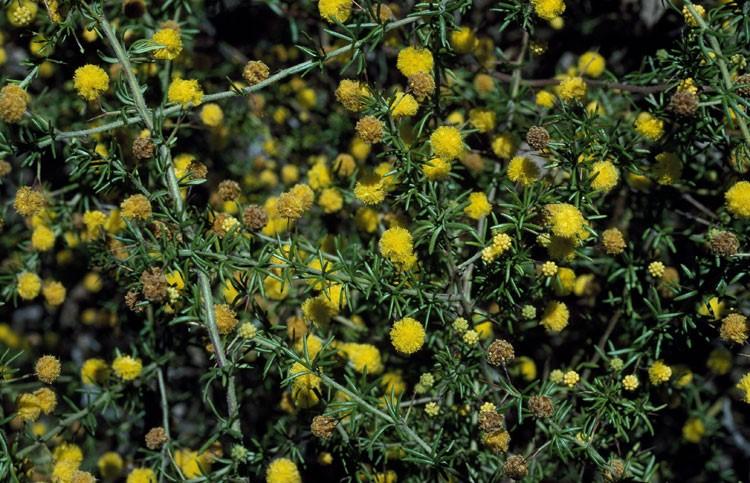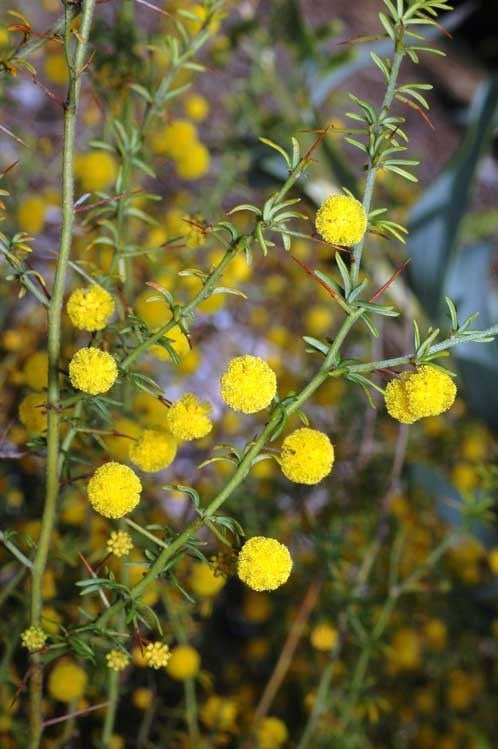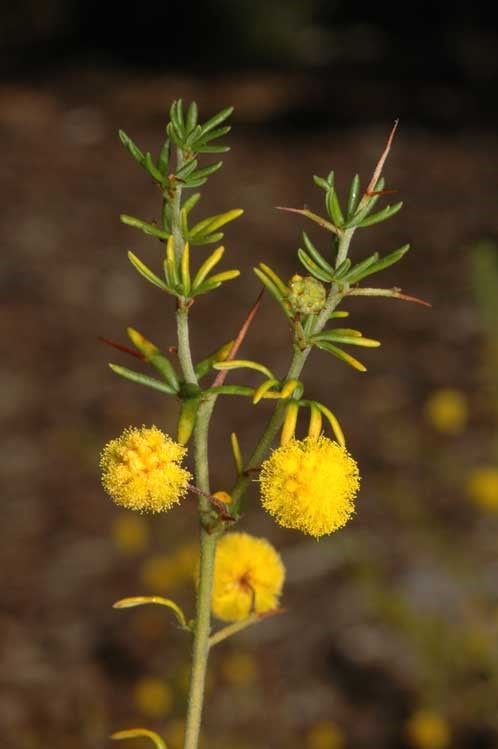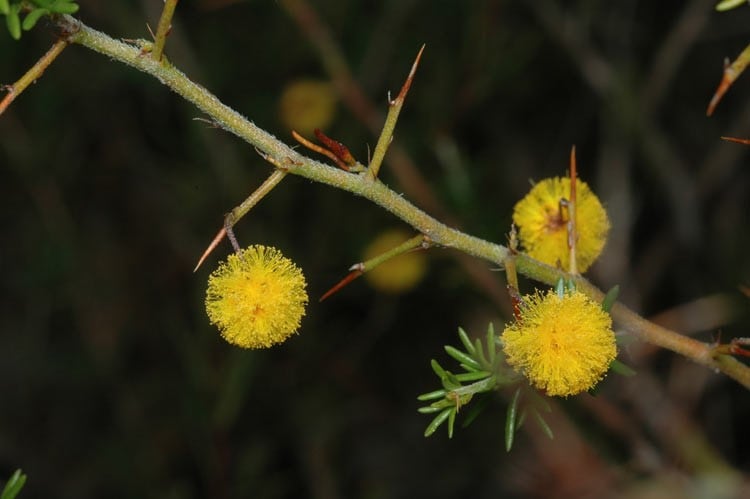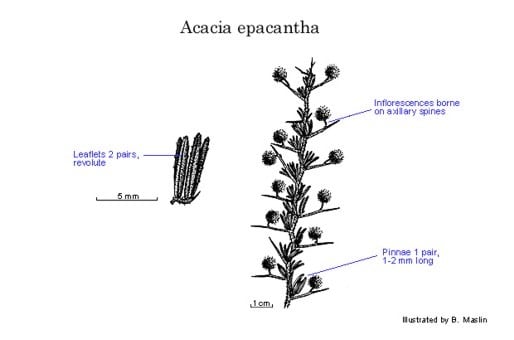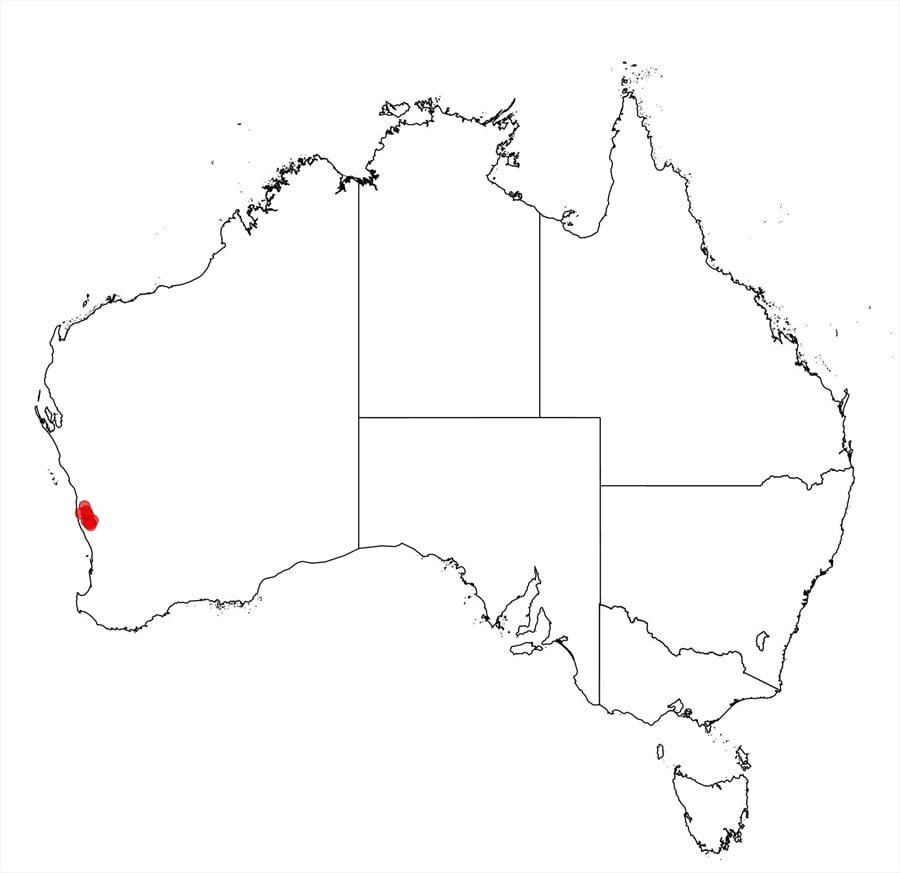Acacia epacantha (Maslin) Maslin
WATTLE
Acacias of Australia
Family
Fabaceae
Distribution
Restricted to the Eneabba–Dandaragan area, south-western W.A.
Description
Shrub 0.3-0.5 m high, dense, spreading. Branchlet indumentum variable. Axillary spines 1 per node, 1-2 cm long. Pinnae 1 pair, usually 1-2 mm long; apices acute, 0.5-1.5 mm long and normally dark brown; petiole normally < 0.5 mm long; terminal seta 1.5-3 mm long, dark brown; pinnules 2 pairs, usually 6-10 mm long and 0.7-1.5 mm wide, revolute, green, glabrous to hirsutellous; gland on petiole at base of pinnae, sessile, minute. Inflorescences simple, situated near or above middle of axillary spine; peduncles 7-10 mm long, appressed-puberulous to glabrous; heads globular, 23-26-flowered, golden; bracteoles acuminate, exserted in buds. Flowers 5-merous; sepals 1/2-3/4-united. Pods curved to circinnate, 1.5-4 cm long, 4-7 mm wide, shortly villous with shiny and straight or subcrisped hairs. Seeds longitudinal, oblong to circular, 2.5-3.5 mm long.
Habitat
Grows in lateritic loam or clay, in heath and open Wandoo (Eucalyptus wandoo) woodland.
Specimens
W.A.: N of Dandaragan, C.A.Gardner 9285 (PERTH); 5 km S of Mt Lesueur, E.A.Griffin 2662 (PERTH); SE corner of Reserve 38966 SE of Eneabba off Rose Thompson Rd, M.Hislop 3276 (PERTH); 15 km N of Badgingarra, P.G.Wilson 3838 (AD, BRI, PERTH).
Notes
The specimen M.Hislop 3276 from within the geographic range of the species has atypically large leaves, pinnae to 8 mm long and pinnules to 16 mm long and 4 mm wide.
Acacia epacantha and A. fagonioides are unique members of the ‘A. pulchella group’ in having inflorescences borne on axillary spines which commonly have the appearance of short branchlets. The long, revolute pinnules readily distinguish A. epacantha.
FOA Reference
Data derived from Flora of Australia Volumes 11A (2001), 11B (2001) and 12 (1998), products of ABRS, ©Commonwealth of Australia
Author
Minor edits by B.R.Maslin
B.R.Maslin
This identification key and fact sheets are available as a mobile application:
URL: https://apps.lucidcentral.org/wattle/
© Copyright 2018. All rights reserved.

